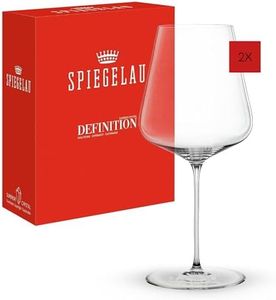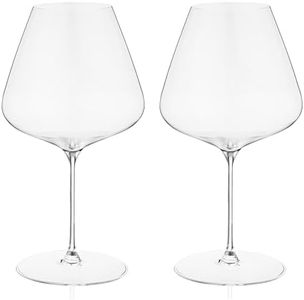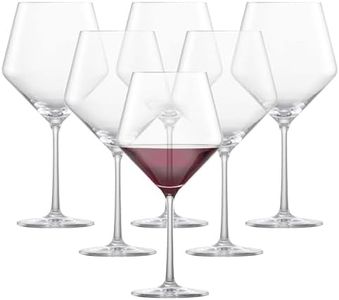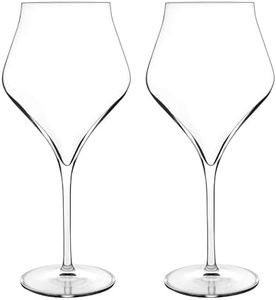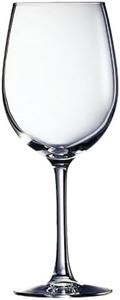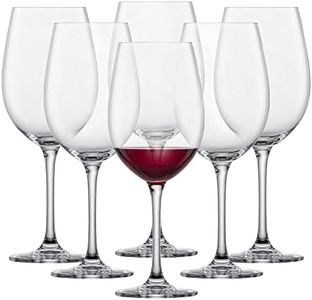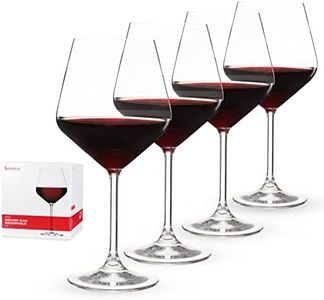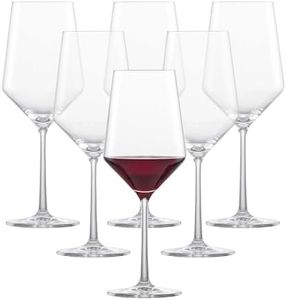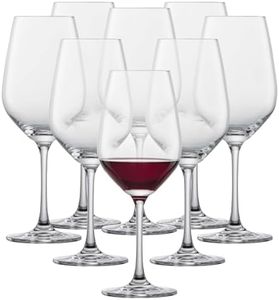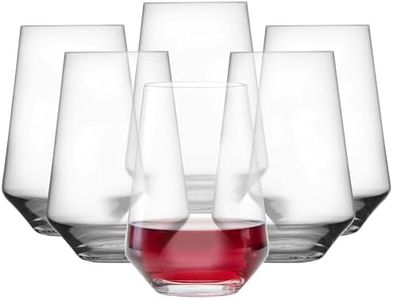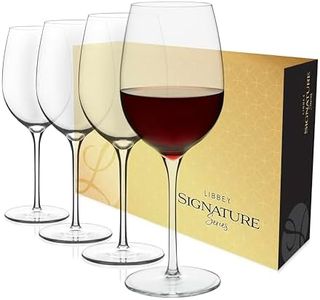We Use CookiesWe use cookies to enhance the security, performance,
functionality and for analytical and promotional activities. By continuing to browse this site you
are agreeing to our privacy policy
10 Best Red Wine Glasses
From leading brands and best sellers available on the web.Buying Guide for the Best Red Wine Glasses
Choosing the right red wine glass can truly transform your wine drinking experience. The shape, size, and overall feel of the glass can affect the aroma, taste, and enjoyment of your wine. It's all about matching the glass to your preferences and the types of red wine you enjoy most. By understanding a few key features, you can make a choice that enhances both the flavor and atmosphere every time you pour a glass.Bowl SizeThe bowl is the rounded part of the glass where the wine sits. In red wine glasses, bowl size is important because it affects how much air gets to your wine, which helps release both aroma and flavor. Generally, bigger bowls give the wine more room to breathe, making the aromas richer. Lighter reds like Pinot Noir benefit from wide, open bowls, allowing the subtle aromas to develop. Bolder reds, such as Cabernet Sauvignon, also do well in larger bowls, but with a slightly taller shape to balance strong aromas and direct flavors. Consider what types of red wine you enjoy most—if you like a variety, a classic medium-to-large bowl is versatile.
Bowl ShapeBowl shape can direct the wine to different parts of your tongue and emphasize certain flavors. Rounded, wider bowls highlight a wine’s fruitiness and smoothness, making them great for softer, lighter reds. Narrower or more tapered bowls can emphasize bolder flavors by concentrating the wine’s aroma. Think about whether you prefer soft and fruity or bold and intense wines, and choose a bowl shape that matches your taste experience.
Rim DiameterThe rim is the top opening of the glass. A wider rim generally delivers the wine across a broader part of your tongue, exposing more flavors, while a narrower rim channels the wine more directly to the center, which can enhance the sensation of acidity. If you like to savor complex aromas and flavors, a slightly wider rim is usually preferable. For those sensitive to acidity, a narrower rim may be best.
Stem LengthStem length affects how comfortably you can hold the glass without warming the wine with your hands. Longer stems are classic and elegant, keeping your hand away from the bowl, whereas shorter stems or stemless designs are modern and less formal. If you want to keep your wine at the right temperature or appreciate traditional table settings, go for longer stems. For casual environments or ease of use, consider shorter or stemless glasses.
Glass Thickness and MaterialThe thickness of the glass and the material it’s made from can influence both the feel of sipping and the aesthetics. Thinner glass provides a more delicate experience and is considered better for tasting as it interferes less with aroma and flavor. Crystal is often thinner and clearer than regular glass, but it’s more fragile. For everyday use, thicker glass may be more durable, while special occasions may justify finer glassware. If you value a refined experience and don’t mind extra care, go thinner; for durability and practicality, choose something sturdier.
CapacityCapacity measures how much the glass holds. Red wine glasses tend to offer higher capacity—usually anywhere from 12 to 25 ounces—allowing you to swirl your wine without spilling. Larger capacity glasses are ideal for letting wines breathe, while smaller ones are more compact and can suit smaller pours. Consider how much wine you typically serve and whether you enjoy swirling and sniffing—that can help you decide what works best for your style.

